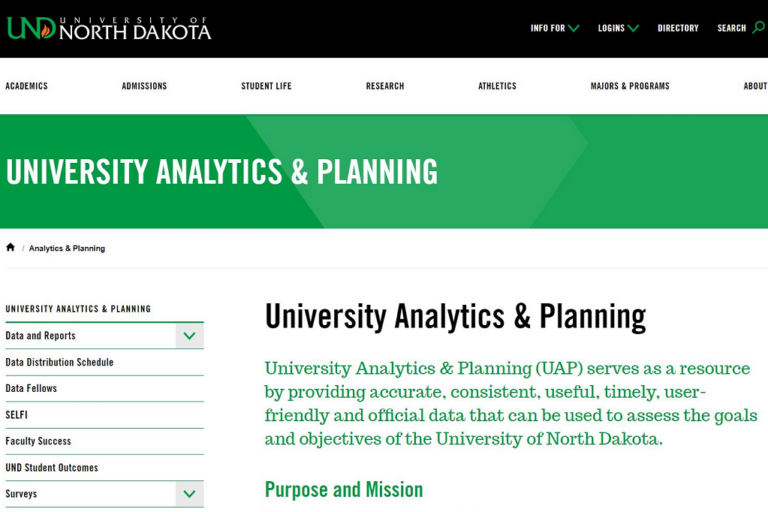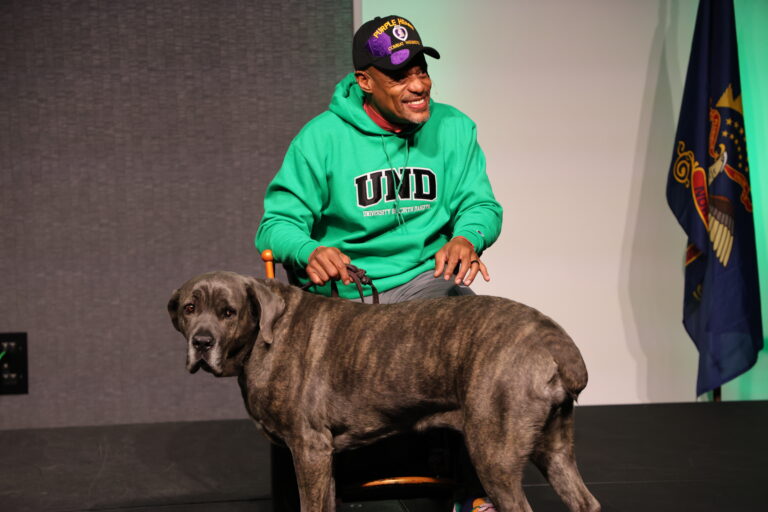Strategic Plan for North Dakota
One UND Strategic Plan marks multiple milestones toward purpose of serving the state and its students

North Dakota is a state of pioneers.
It’s a state of innovators.
It’s a state of leaders in action, and its training ground is the University of North Dakota.
In the heart of Grand Forks, students, researchers and scholars are working as One UND to move society forward. The Flagship University of the Northern Plains serves as the chief opportunity engine for North Dakota, using the One UND Strategic Plan as its compass.
And the course has never been so clear for one the country’s Top 25 Most Innovative Schools.
Together with its public and private partners, the University of North Dakota is leveraging technology, collaboration and real-world experiences to create healthier, smarter and more vibrant communities.
A strategic plan is only as good as the foundation it is built upon, and UND has already established a solid one – less than a year into implementation.
Goal One – Provide a strong undergraduate liberal arts foundation
Achievements
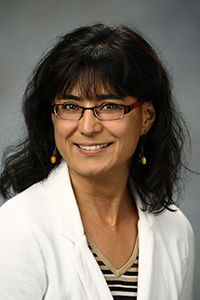
Goal One will develop leaders who bring a skill set to the workforce that is enhanced by critical thinking, communication and cultural competency.
To ensure that it is meeting this aim, UND has begun an effort with the Association of American Colleges & Universities’ VALUE Institute to measure the effectiveness and learning outcomes of its liberal arts foundational experience.
The University is expanding opportunities for experiential learning and internships through partnerships with the UND Center for Innovation and the Grand Forks Region Economic Development Corporation (InternGF), the Energy & Environmental Research Center (Energy Hawk program) and the City of Grand Forks.
Investments in active learning spaces have helped faculty incorporate advanced technology and modern curricula into their courses to enhance student learning. A quick tour through campus reveals a Math Active Learning Lab for self-paced coursework, a DigComm lab utilizing virtual reality to improve speaking skills, and a number of SCALE-UP classrooms for team-based learning.
Next Steps
To create a deep portfolio of quality high-impact practices (HIPs) for its students, the Goal One team is compiling a list of currently offered HIPs and will ensure every student engages with three or more HIPs during their undergraduate experience.
The team will also develop pathways for students to create double major or major/minor/certificate combinations to fit their individual interdisciplinary interests and career goals without extending their graduation timeline.
“Ensuring UND graduates have a strong liberal arts background is beneficial to the state,” said Debbie Storrs, captain of Goal One and dean of the College of Arts & Sciences. “We will graduate students who have breadth of knowledge and important social, problem solving and intellectual skills that are in high demand by employers, resulting in greater economic productivity of the state, region and world.”
Goal Two – Increase graduation and retention rates
Achievements

Goal Two is using technology to help UND students stay on academic track. Its online student success and advising tool, Starfish, continues to gain usage among students and faculty. From Spring 2017 to Spring 2018, the completion rate for midterm reporting through the platform climbed more than 20 percent.
This spring, UND partnered with North Dakota State University (NDSU) to select a degree planner software that will allow students to track the progress and remaining requirements of their degree plans, helping them to avoid missteps and graduate on time.
The Goal Two team has also busted at least 11 barriers to enrolling as a returning or transfer student, and 65 percent of UND programs have adjusted to a more manageable 120 credit hour standard.
Next Steps
By September, UND will more clearly define best practices for its advisors through student surveys, determining what areas of support will help them most on their path to a career.
Also in the fall, a pilot campaign will introduce students to the new degree planner and show them how a few clicks can create smooth sailing to a diploma.
The University has also made a priority of reducing the number of actions that can cause a “hold” on a student account, hindering their ability to register for classes.
“Improving graduation rates will help students, the University and the state in many ways,” asserted Goal Two captain and dean of the College of Engineering & Mines, Hesham El-Rewini. “Graduating in four years will help students save on college expenses, reduce student loans and expedite their joining of the workforce.”
Goal Three – Deliver more educational opportunities online and on campus
Achievements
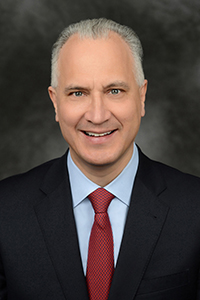
The University of North Dakota is spreading the message throughout the state and beyond that it is the home of Leaders in Action with the launch of a new brand message based on surveys from the UND community, alumni and stakeholders. A revamped digital marketing drive – harnessing the Leaders in Action tagline and unique program selling points – has already increased advertising productivity.
In order to open up the opportunity of a UND education to even more students as soon as this fall, the University has launched a review of its scholarships awards.
Following an assessment of today’s workforce needs, UND has attained approval to introduce two new programs this fall – data analytics and cyber security.
Even more offerings will grow from a recently penned agreement with Pearson online program management, which will begin with assistance in launching online master’s degrees in cyber security and accounting, building on UND’s already regionally dominant online education foundation and creating new opportunities for degree pathways within the North Dakota University System.
Next Steps
By the end of the spring semester, new campus banners will welcome visitors with Leaders in Action imagery, and the May 21 launch of a redesigned, mobile-friendly UND.edu will make it easier for prospective students to find a program that suits them.
Through another collaboration with NDSU, UND will select and begin implementation of new Customer Relationship Management Software to analyze and respond to the needs of prospective students and their families.
By September, UND will have concluded its review of the enrollment management and scholarship awarding processes, paving the way for future leaders in action.
“Goal Three’s objectives are framed around the idea that UND has an opportunity to play a vital role in shaping and advancing North Dakota’s economy over the coming years,” said UND President and interim Goal Three Captain Mark Kennedy. “We are creating opportunities and reducing barriers for our students to earn high-demand degrees and certificates that can be directly applied in our region’s economy.”
Goal Four – Enhance discovery at a level consistent with most research-intensive universities (Carnegie R1)
Achievements

The formation of five Grand Challenge teams – charged with addressing societal problems especially important to North Dakotans through interdisciplinary work in biomedicine, energy, UAS, rural communities and big data – has revved up UND’s research enterprise. The University has already provided $3.7 million in seed grants and postdoctoral funding this biennium to help faculty garner additional external research funding – historically a 7-to-1 return on investment.
The University is drawing closer to its goal of becoming a Carnegie R1 university after reexamining its process of reporting and directing research investments. That examination, paired with a rise in externally funded expenditures, allowed UND to report more than $100 million in total research expenditures.
The development of the Research Institute for Autonomous Systems (RIAS) is fortifying public and private partnerships across North Dakota to help the state lead the way in the exploding field of UAS.
Next Steps
By this fall, the Colleges of Arts & Sciences, Business & Public Administration and Engineering & Mines, as well as the School of Medicine & Health Sciences, will have defined research expectations for their respective academic units – with the ultimate goal of requirements in every college.
The Research & Economic Development team will also implement software to assist in research proposal submissions, and will conclude revisions to its Digital Measures reporting system to help researchers and scholars more easily and clearly document their productivity.
“Research drives technology and economic development in core sectors of North Dakota’s economy,” said Grant McGimpsey, vice president for research and economic development and captain of Goal Four. “At UND, we’re creating new opportunities to expand and diversify our industry sectors and new career prospects for graduates.”
Goal Five – Foster a welcoming, safe and inclusive campus climate
Achievements

Diversity is integral to a campus climate that builds well-informed and empathetic citizens, and UND is fostering that environment.
The Goal Five team has traveled across North Dakota to assess the needs of the state’s tribal colleges and create pathways for those students to continue their success at UND. They’ve begun efforts to establish 2+2 programs (also known as “Finish in Four”) for priority degrees, starting with an agreement with Candeska Cikana Community College for general studies, social work and marketing degrees.
The team has also completed a campus climate survey of all degree-seeking students to evaluate current thoughts on sexual violence, diversity and inclusion, which will allow the University to better target its support efforts. A proactive step in this direction was the establishment of CVIC at UND this January, a partnership with the Community Violence Intervention Center to station a prevention & education coordinator on campus.
The recent formation of the Department of Student Diversity and Inclusion will pull units and resources together to enhance student support.
Next Steps
In the months to come, UND will analyze the results of the campus climate survey and outline next steps for turning that data into action.
To create more buzz and attendance for cross-cultural events on campus, the University will heavily market those opportunities and define benchmarks for student and community turnout.
Another fall priority is improving the year-to-year retention rate for half or more of the racial, ethnic and first-generation population segments reported in the Integrated Postsecondary Education Data System (IPEDS).
“Fostering an inclusive environment at UND serves the state by ensuring that we are attracting and educating the best students with interest in evolving fields of study,” said Goal Five captain and vice president for Student Affairs & Diversity, Cara Halgren. “We have the opportunity to show students who may be new to the area all of the great things that living in Grand Forks and the greater North Dakota area has to offer.”
Goal Six – Meet educational needs of active-duty military personnel, veterans and their families
Achievements
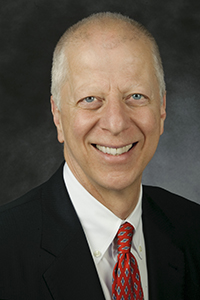
The Grand Forks Air Force Base (GFAFB) is a core piece of the Greater Grand Forks community, and UND is positioned to serve those who serve on the base and beyond.
The Goal Six team worked beside GFAFB leaders to identify what programs are most in demand by the military, with plans of working with Goal Three to initiate those programs. Three UND degrees have already been accepted by the Air University Associate to Baccalaureate Cooperative (AU-ABC) – general studies, communication and psychology – allowing airmen stationed anywhere to continue their degree online with UND.
The University has also simplified the way in which American Council on Education (ACE) credits are received, making the transfer of some credits earned through military learning equivalent to required UND courses.
Next Steps
Moving forward, UND will continue to add degrees to its online AU-ABC partnership based on the current and future education needs of airmen.
By September, UND hopes to develop additional partnerships with Army University, as well as Servicemembers Opportunity Colleges – an association of schools making college degrees easier to obtain for frequently transferring military members and their families.
“With two Air Force bases and a significant presence of military personnel, veterans and ROTC units, Goal Six will allow UND to better serve a significant group of our citizenry,” explained UND Provost and Goal Six Captain Tom DiLorenzo. “We believe that this will increase their long-term connections to North Dakota by building a better workforce and broadening our North Dakota family.”

Goal Seven – Attract support for the University by actively engaging alumni and donors
Achievements
The University’s graduates and supporters are the lifeblood of UND and its tradition, and those connections spawn the opportunities available for incoming leaders in action. To keep those relationships strong, the Goal Seven team is working to enhance donor relations and target fundraising efforts.
Fundraising goals have been established for every dean and vice president to improve relationships between specific colleges/units and their donors and ultimately increase the capacity for dollars raised.
The Alumni Association & Foundation has also begun testing and refining its crowdfunding efforts, which have already yielded success for several campus organizations.
Next Steps
The team has several goals for the six months ahead, starting with surpassing its prior year number of donors.
Next will be a focus on marketing the importance of giving, with the assembly of a virtual toolkit that will contain photos, impact stories and other materials to effectively present that message to alumni and potential donors.
From now through September, a number of alumni social events are planned throughout North Dakota and Minnesota, including meeting points in Minneapolis, Fargo, Bismarck and the Bakken region. The events ignite the giving fire in graduates, reminding them what made their time at UND so pivotal.
“Donors fund scholarships, research, top-flight professors and so much more at UND,” said DeAnna Carlson Zink, UND Alumni Association & Foundation (AA&F) CEO and Goal Seven captain. “As we educate the future leaders of North Dakota, the state reaps the benefits of the well-rounded students that UND produces.”

